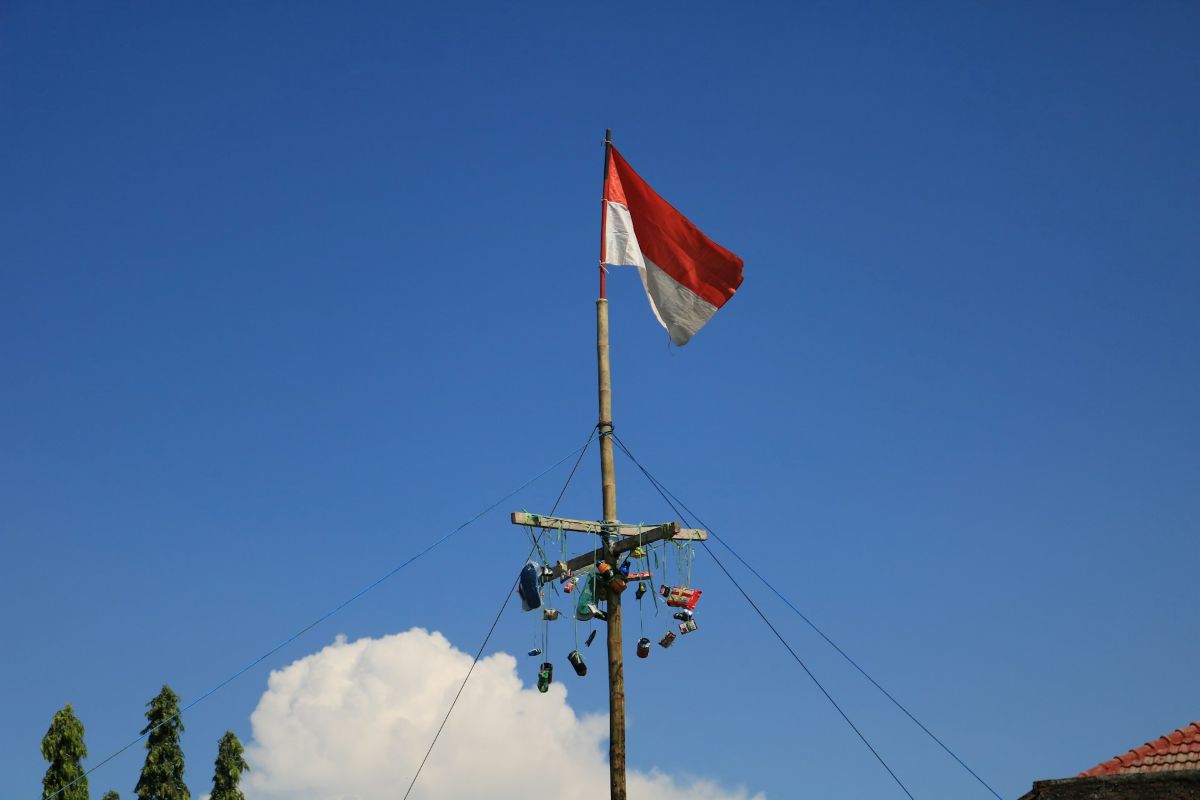Table of Contents
ToggleLet’s take a deep dive on the dynamic Indonesia energy sector.
Indonesia, the economic powerhouse of Southeast Asia, is entering a transformative phase in its energy sector. With vast natural resources, strategic initiatives, and a robust policy framework aimed at fostering sustainability, Indonesia is positioning itself as a pivotal player in the global energy market. This dynamic shift presents substantial opportunities for investors, enterprises, and stakeholders poised to navigate the evolving landscape.
Read our Indonesia country guide
A Brief History on The Indonesia Energy Sector
Indonesia’s energy trajectory has long been shaped by its rich reserves of fossil fuels. The country initially relied heavily on oil and gas exports to fuel its economic growth, with its membership in OPEC signifying its central role in global energy markets. However, as oil production declined in the early 2000s and domestic consumption surged, Indonesia began to confront the limitations of its fossil fuel dependency.
Recognizing the need for a diversified energy mix, the Indonesian government initiated reforms to reduce its reliance on oil and increase investment in renewable energy sources. This includes among others the 2005 fossil subsidy reform and the National Energy Policy in 2014 that set targets for renewable energy to constitute 23% of the energy mix by 2025 and 31% by 2050. The 2010s marked a pivotal era, where the focus shifted toward clean energy, particularly solar, wind, geothermal, and hydropower. As the nation increasingly sought energy security, resilience, and sustainability, Indonesia positioned itself as a regional leader in energy transformation.
Read more: Indonesia Payroll Guide: Compliance and Best Practices
The Current State of the Indonesia Energy Sector
Today, the Indonesia energy sector is a blend of tradition and innovation:
- Fossil Fuels: Despite efforts to diversify, fossil fuels, still dominate the energy mix, accounting for over 77.2% of electricity sources in 2022 according to the International Energy Agency. In particular, coal accounts for 36% of the energy supply and 71% of domestic energy production.
- Natural Gas: The country is a key player in the LNG market, both for domestic consumption and as a major exporter.
- Renewables: As of 2025, renewable energy accounts for approximately 13–15% of Indonesia’s total energy mix, with The Ministry of Energy and Mineral Resources (ESDM) reporting that the country’s 2024 renewable energy mix reached only 14.1%. This is still notably short of the government’s ambitious target of 23% by this year and 31% by 2030. This gap highlights both the scale of the challenge and the continued urgency behind Indonesia’s push for deeper clean energy integration.
- Electricity Demand: As urbanization continues, electricity consumption is rising, driven by industrial growth and an expanding middle class.
This transition reflects Indonesia’s balanced approach, leveraging its fossil fuel legacy while moving steadily toward a more diversified and sustainable energy future.
LNG Expansion: Strengthening Energy Security
A pivotal initiative in Indonesia’s energy transformation is the expansion of its liquefied natural gas (LNG) infrastructure. Following a decade of setbacks, the program is finally advancing in 2025 with a substantial $1.5 billion investment. Spearheaded by PLN EPI, a subsidiary of the state-owned utility Perusahaan Listrik Negara (PLN), the initiative aims to replace imported diesel with LNG at 41 power plants. These plants, with a total generation capacity of 2,148 MW, are expected to come online between 2026 and 2027.
This project goes beyond a mere cost-saving measure; it is a strategic move to bolster national energy resilience and mitigate carbon emissions. By shifting to LNG, Indonesia is laying the groundwork for a more stable, sustainable, and environmentally friendly energy future. The project presents significant opportunities for infrastructure investment in areas such as transportation, storage, and regasification facilities, all integral to ensuring the success of this transformative energy shift.
Biodiesel Production: Scaling Renewable Ambitions
As the world’s leading producer of palm oil, Indonesia is uniquely positioned to advance global bioenergy initiatives. In a bold move to further reduce its reliance on imported petroleum, the government has announced plans to increase its biodiesel blending mandate from 40% (B40) to 50% (B50) by next year. This policy shift will necessitate a substantial increase in production capacity, with an additional 4 million kilolitres of biodiesel required.
This expansion is not only vital for reducing dependence on foreign oil but also serves as a key pillar in Indonesia’s broader strategy to foster rural economic growth, stimulate job creation, and promote low-carbon energy alternatives. Opportunities abound for investors in biodiesel production, including the optimization of supply chains, sustainable palm oil sourcing, and innovations in fuel quality and efficiency.
Nickel Industry: Balancing Growth with Sustainability
Indonesia’s nickel industry has experienced an unprecedented boom, catalyzed by the 2020 export ban on raw nickel ore, which triggered a wave of foreign investment into domestic processing and value-added production. Today, Indonesia stands as a global leader in nickel-based battery materials, which are critical to the electric vehicle (EV) revolution.
However, the rapid growth of this sector has not come without challenges. While the industry has spurred significant economic development, it has also raised concerns about environmental degradation and social inequalities, particularly in mining regions like Central Sulawesi. In response, the government is championing inclusive sustainability programs aimed at creating green jobs. These initiatives include nickel waste recycling, reforestation efforts, and agroforestry projects—steps that not only mitigate ecological impact but also maximize benefits for local communities.
For ESG-conscious investors, this shift toward sustainable mining practices presents a compelling opportunity to engage in environmental remediation, circular economy technologies, and community-driven development.
Pumped Storage Hydropower: Stabilizing the Renewable Grid
In a further bid to support the integration of renewable energy, Indonesia is advancing its first pumped-storage hydropower plant—the Upper Cisokan project in West Java. Scheduled for completion in 2025, this 1,040 MW facility will play a crucial role in stabilizing the grid, managing the intermittency of renewable energy sources like solar and wind, and ensuring a consistent power supply during peak demand periods.
The success of this project will likely pave the way for additional investments in energy storage technologies, smart grids, and next-generation grid infrastructure. These sectors represent promising opportunities for private-sector participation, particularly in light of the growing global focus on reliable and sustainable energy solutions.
Strategic Investment and Global Partnerships
Indonesia’s energy diversification strategy is creating a wealth of investment opportunities across LNG, bioenergy, sustainable mining, and renewable power infrastructure. The government has actively signaled its openness to international collaboration, offering incentives and streamlined licensing processes to attract foreign investors.
Multinational energy firms, infrastructure developers, and clean technology providers will find fertile ground for partnerships in Indonesia. The country’s ambitious target of achieving net-zero emissions by 2060 further underscores the long-term potential for impactful investments in these sectors.
Read more: Maximum Wage Limit for Indonesia Pension Insurance Contributions Raised

Challenges: Navigating the Complexities of the Indonesia Energy Sector Transition
The Indonesia energy sector, while teeming with potential, is not without its challenges. The path to a sustainable and diversified energy future is fraught with systemic, financial, and socio-political hurdles. To capitalize on the opportunities available, investors must understand and navigate these challenges to ensure long-term success.
1. Regulatory and Policy Inconsistencies
The regulatory environment in Indonesia, although evolving, remains a significant challenge for investors looking to enter the energy market. The frequent shifts in energy policy, coupled with the decentralization of authority across different levels of government, create uncertainty and unpredictability. While the government has expressed clear intentions to transition toward cleaner energy sources, the process has not been without friction.
Key issues:
- Inconsistent regulations: Changes in policies regarding renewable energy tariffs, licensing requirements, and subsidies can cause delays and add complexity to project execution.
- Local government involvement: Indonesia’s energy regulations often require approvals and coordination with regional governments, which may interpret policies differently, slowing down project timelines.
- Bureaucratic inefficiencies: Permitting processes for large-scale energy projects can be sluggish, with long approval times for new infrastructure or technology deployments, particularly in remote areas.
These regulatory challenges can deter potential investors and create uncertainty in long-term planning, requiring strong local partnerships and navigational expertise to mitigate.
2. Financing and Infrastructure Deficits
While Indonesia’s government is actively promoting energy diversification and infrastructure upgrades, access to sufficient and affordable financing remains a critical bottleneck. This issue is compounded by the limited availability of specialized financial instruments for green projects and the challenges posed by inadequate energy infrastructure in certain regions.
Key issues:
- Limited green finance opportunities: Despite rising global demand for sustainable investments, Indonesia’s green finance sector is still in its nascent stages. The lack of sophisticated financial instruments, such as green bonds or specialized renewable energy funds, makes it harder for investors to find suitable financing for large-scale projects.
- Infrastructure gaps: Indonesia’s energy infrastructure, particularly in remote or outer islands, remains underdeveloped. While urban areas like Java benefit from relatively advanced grid systems, vast parts of the country still lack the infrastructure needed to support the widespread adoption of renewable energy sources such as solar and wind. Inadequate transmission and distribution networks increase the costs and risks associated with renewable energy projects.
- Funding gaps for renewable energy projects: Many of Indonesia’s renewable energy projects, particularly in wind, solar, and geothermal, require significant capital investment. However, the absence of structured financing mechanisms for these initiatives makes it difficult to attract private capital at the scale needed for transformation.
A robust green finance market and improved energy infrastructure will be essential to bridging these gaps and enabling the seamless transition to renewable energy.
3. Overdependence on Coal and the Transition to Cleaner Alternatives
Coal remains entrenched as Indonesia’s dominant energy source, despite efforts to shift towards cleaner alternatives. The country has significant coal reserves and a long history of using coal for power generation. As a result, Indonesia’s energy sector is not only heavily reliant on coal but also faces significant political and economic pressures to maintain coal’s central role in the energy mix.
Key issues:
- Economic interests in coal: The coal industry is a major economic driver, providing employment to millions of people and contributing significantly to local economies, especially in areas such as East Kalimantan and South Sumatra. This makes a transition away from coal politically sensitive and economically challenging.
- Lack of viable alternatives in some regions: While Indonesia has ambitious plans to expand its renewable energy portfolio, certain regions are still highly dependent on coal and lack the necessary infrastructure to integrate cleaner energy sources. For example, geothermal and solar power are viable in some areas, but not in others where coal remains the most reliable source.
- Energy security concerns: As Indonesia’s economy grows, maintaining affordable and reliable power supply becomes a top priority. Given coal’s current cost competitiveness, reducing its role in the mix without jeopardizing energy security presents a delicate balancing act.
Overcoming this dependency on coal requires a holistic and phased approach that balances environmental goals with economic and social realities, making this one of the most pressing challenges for the sector.
4. Environmental and Social Impacts: Striking a Balance
Indonesia is home to some of the most biodiverse ecosystems on the planet, and the demand for land and resources for energy production often leads to environmental degradation. The rapid expansion of biofuels, mining activities (such as nickel extraction), and large-scale hydropower projects, while contributing to energy security, have triggered significant environmental and social concerns.
Key issues:
- Deforestation and land-use change: Large-scale palm oil production to meet the growing biodiesel demand leads to significant deforestation, threatening Indonesia’s rainforests and biodiversity. This has resulted in both domestic and international criticism, including concerns over carbon emissions and habitat destruction.
- Water and ecosystem impacts from hydropower projects: While hydropower is a key component of Indonesia’s renewable energy strategy, large-scale projects can cause environmental disruptions, including river ecosystem degradation and the displacement of communities. The Upper Cisokan Pumped Storage Power Plant and other such projects require careful environmental management to mitigate negative consequences.
- Community displacement and social opposition: Mining and energy projects, particularly those related to nickel, have led to displacement of communities and tensions with local populations. Despite initiatives aimed at inclusive growth, the social impacts of these industries remain a challenge, especially when communities feel marginalized or adversely affected by economic activity in their region.
Addressing these environmental and social issues requires strict adherence to sustainability principles, transparent governance, and an inclusive approach that prioritizes both the health of the environment and the well-being of local communities.
5. Skill Gaps and Workforce Development
As Indonesia seeks to expand its renewable energy capacity, there is an increasing need for a highly skilled workforce to manage and operate new technologies. The country’s education and training infrastructure is still catching up with the demands of a modern, green economy.
Key issues:
- Limited technical expertise in renewables: While Indonesia has made progress in developing its renewable energy capacity, there remains a lack of qualified engineers, technicians, and project managers with specialized knowledge in fields such as geothermal, wind, and solar energy. This skills gap could hinder the effective implementation of renewable energy projects.
- Workforce readiness for green technologies: The transition to green energy will require a workforce that can operate advanced technologies such as smart grids, energy storage systems, and electric vehicle infrastructure. There is a need for targeted education and training programs to prepare the next generation of energy professionals.
- Job displacement in traditional sectors: The shift away from fossil fuels, particularly coal, may result in job losses in certain sectors, particularly in coal mining and fossil fuel-based power generation. While green jobs are being created, transitioning the workforce in a socially responsible manner will be crucial to avoid further socio-economic disparities.
Developing a workforce capable of supporting Indonesia’s energy transformation will require strategic investments in education, training programs, and public-private partnerships aimed at fostering the next generation of energy professionals.
Conclusion
While the Indonesia energy sector is poised for significant transformation, the challenges outlined above require careful consideration and proactive strategies. Investors must navigate regulatory complexities, financing constraints, socio-political factors, and environmental concerns to realize the full potential of the market. However, these challenges are not insurmountable. With the right policies, partnerships, and innovations, Indonesia can emerge as a global leader in clean and sustainable energy, offering unmatched opportunities for those ready to engage with its evolving landscape.
To effectively navigate Indonesia’s dynamic energy sector and maximize your investment potential, consider leveraging our Employer of Record services. We provide comprehensive support, from legal compliance to human resource management, enabling you to focus on strategic growth and innovation.
Contact Eos Global Expansion today. Check our services here or book a free consultation now.
Photo by Zoraya Project on Unsplash







